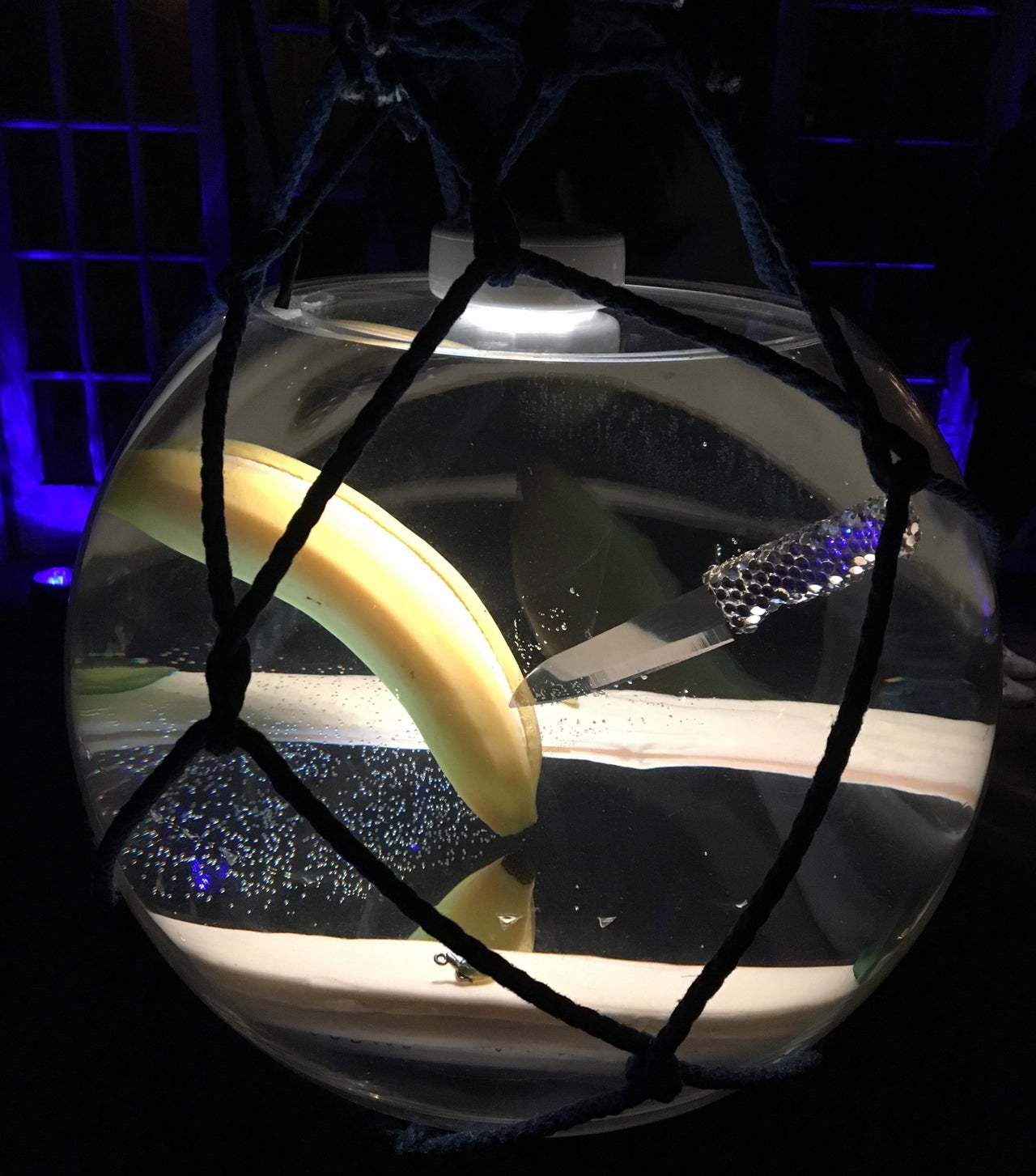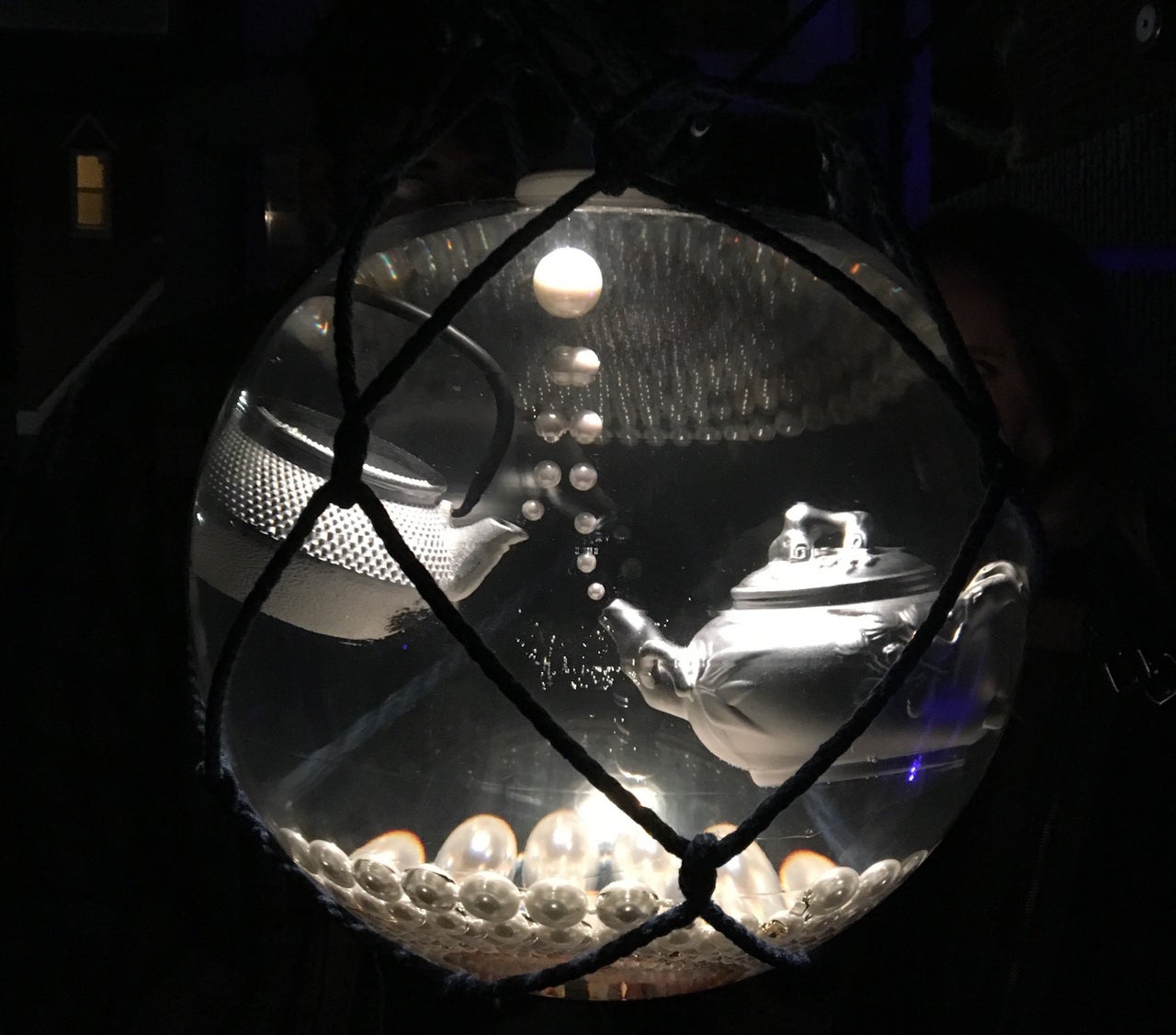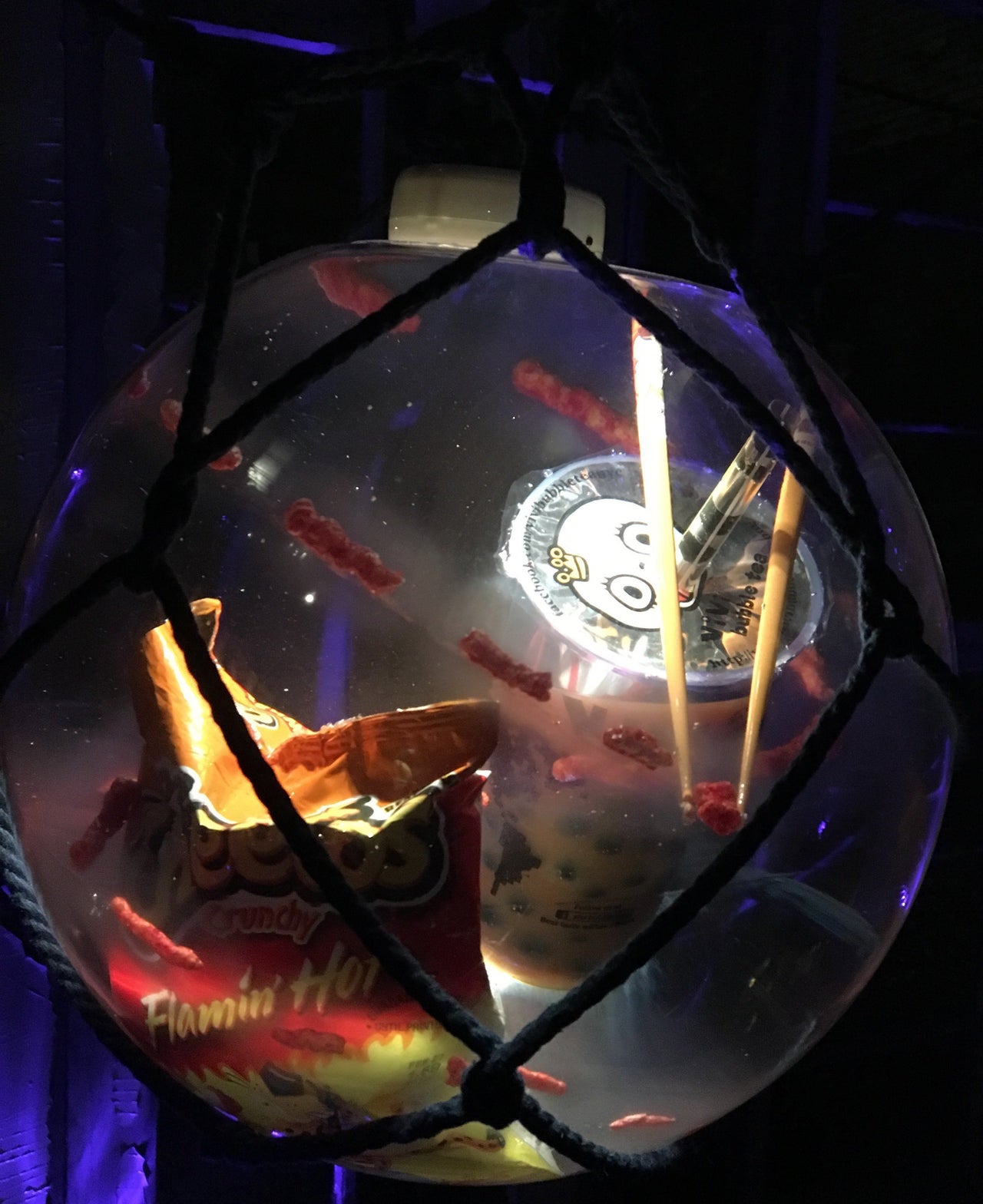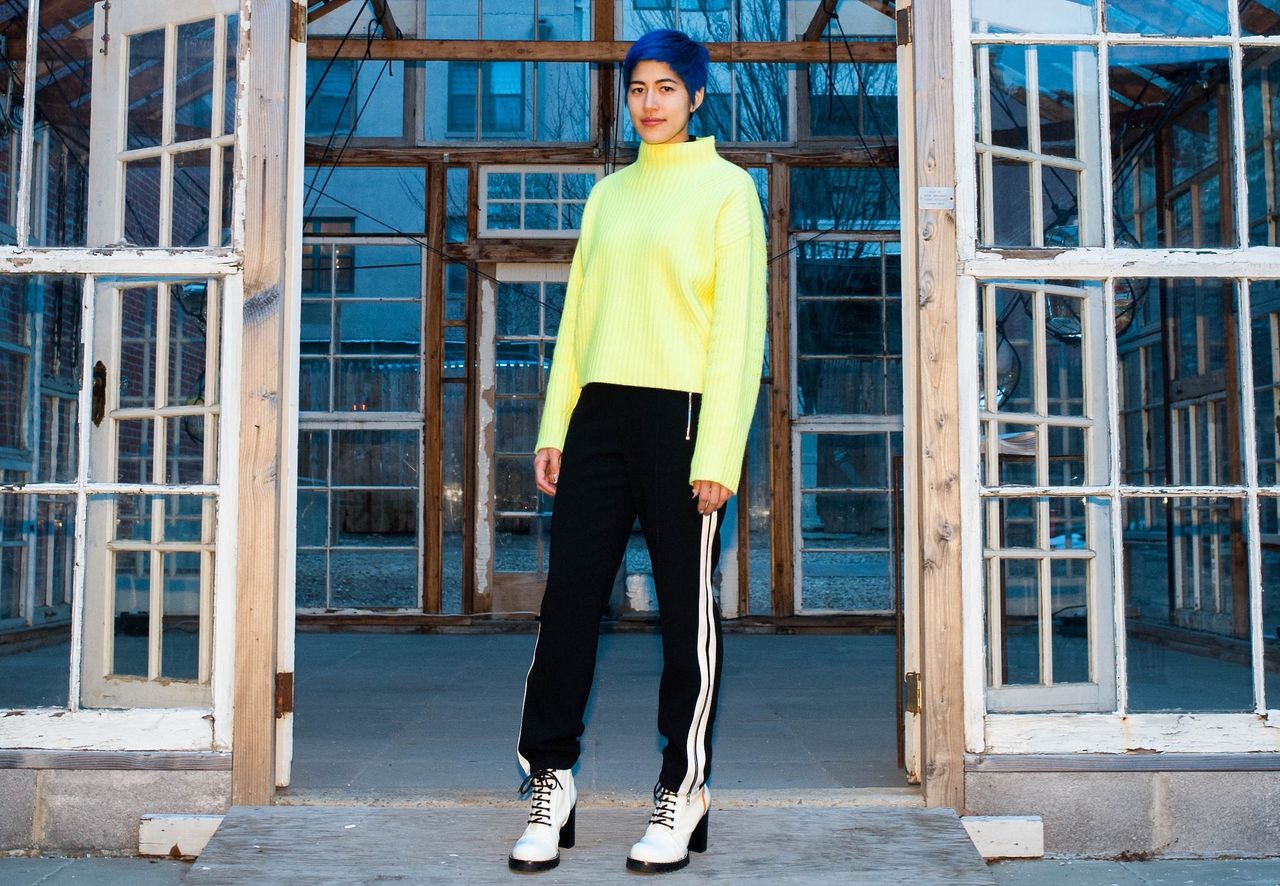NEW YORK ― At a gallery in Brooklyn, spherical glass suspended in the air by fishnets from a Japanese antique store look like beachcomber finds. The orbs are meant to resemble Japanese ukidama, glass balls that are fixed to fishing nets to prevent them from sinking. Inside each orb are works that symbolize artist Emma Sulkowicz’s Chinese, Japanese and Jewish identity.
The exhibit, called “Floating World,” or “ukiyo” in Japanese, is a reference to the hedonistic atmosphere of pleasures like kabuki theatre and bathhouses from the Edo period of Japan, spanning the 17th to the 19th century. The word also refers to sorrow and grief.
Sulkowicz, who identifies as femme and whose pronouns are they and them, is best known for “Mattress Performance,” their senior thesis. During the 2014 school year, Sulkowicz carried a mattress everywhere with them on campus as a visual reminder that their alleged rapist, a freshman athlete who was found “not responsible” by a university inquiry, was still on campus. That same year, 23 other students filed complaints alleging that Columbia mishandled sexual misconduct cases.
Sulkowicz, a New York native, says they’re now focusing on exploring both race and gender through art by depicting what it feels like to be an Asian-American person and to often feel like an outsider.
“I realized so many things were related to being an Asian woman. I didn’t report it all because I’m Asian and told not to have emotions and just be successful,” they told HuffPost. “Now I’m having my first show that explores where race really intersects with feminism.”
“Why are we angry Asians? It comes from a place of being stepped on. There is a level of invisibility we have.”
- Emma Sulkowicz
One of the more commanding pieces of their exhibit showcases a banana sliced with a knife, a subversive statement on both gender and race, Sulkowicz explains. The piece is dedicated to their sister and contains a video of her cutting the banana and designating it a phallic symbol. The banana also represents the Asian-American experience.
“Banana is a term for Asians who are too Americanized. That’s a source of vulnerability,” Sulkowicz said, explaining that the knife cutting through the banana comes from a place of anger as well.
“We identify ourselves as angry Asians,” they added. “Other people do, too. In some ways that’s a powerful tool. But in some ways and tones, that’s a way of dismissing our anger. Its kind of a dismissive term, and so many Asians are liable to dismiss themselves. There’s a lot of racism we have to deal with. Why are we angry Asians? It comes from a place of being stepped on. There is a level of invisibility we have.”

Sulkowicz’s parents are represented in the exhibit, too. A suspended tea ceremony represents their mother, who is half Chinese, half Japanese. The string of pearls are meant to appear as two cells merging into one, which they described as “biological.” The pearls are tied together with knots to represent a maternal bond.
“There is this Asian maternal tradition of beading pearl necklaces and we spent mother and daughter time doing it,” they said.
An orb containing a bagel, fixings and iced coffee represents Sulkowicz’s Jewish father’s longstanding Sunday tradition. The handmade items crafted with epoxy ― bagel, lox, tomato, onion ― are arranged as pillars to symbolize him. Inside the bowl, the water looks cracked, which they explain became part of the work itself.
“Sulfur radiation caused fractures to happen inside of the bowl and caused the silicone to look like cracked water. It represents the fragility of masculinity,” the artist said.

Sulkowicz describes a bowl containing Cheetos and chopsticks as being inspired their friend, May, who is half Chinese and half Japanese. “May eats Cheetos with chopsticks. That’s such a boiled-down example of growing up mixed-race Asian in New York. You’re eating American trash but with an Asian tool. It’s a moment I wanted to capture.”
Sulkowicz also described the nostalgia of having an Asian-American friend who understood them.
“We’ve had so much bubble tea together and not all the white kids at our school would understand what we were drinking,” they said.

“Floating World” also draws on their grandmother’s experiences as the owner one of the largest hostess clubs in Tokyo, where female staff would drink and converse with men. And though it wasn’t widely reported, “Mattress Performance” was also Asian-American performance art, tied up in theories about hospitality and compliance, Sulkowicz said.
“During ‘Mattress Performance,’ there was this way I constantly felt I was being put in the position of my grandmother,” Sulkowicz said, stating that the rules of the performance meant accepting any help in carrying the mattress offered by any stranger.
“Does an Asian woman have the same power to refuse a stranger? Asian woman are expected to be hospitable and taught to be hospitable. And it made me think about how obviously that plays into why Asian women are more susceptible to be sexually violated. And it manifested a lot in ‘Mattress Performance.’”
Sulkowicz describes letting people into what they considered their bedroom at the time.
“I’m letting person into my domestic space. We’re going to touch my bed together. Because we’re holding my bed together, they already know my story. So I was re-subjecting myself in a particularly Asian feminist way. And I’m choosing to do this as a way to heal.”
Processing their feelings about how race and gender intersect following “Mattress Performance,” Sulkowicz says they are working to find peace with their identity and learning to fight back against stereotypes.
“It’s hard to be taken seriously as Asian woman in art world,” they said. “I feel highly sexualized. I’m so sick of men who come up to me after a performance and say, ‘Do you think anyone would care about your artwork if you weren’t pretty?’ When will you leave any room for my artwork to speak for itself?”
Ultimately, Sulkowicz says the momentum surrounding women’s rights over the past four years, and most recently with the Me Too movement, is inspiring ― and they know they’ve helped influence the conversation surrounding consent. “At that time when women talked about a shared violence, nobody cared,” they said. “Nowadays if a number of women band together and talk about a man who assaulted them, it actually works.”
Floating World is at The Invisible Dog in Brooklyn until April 22.
